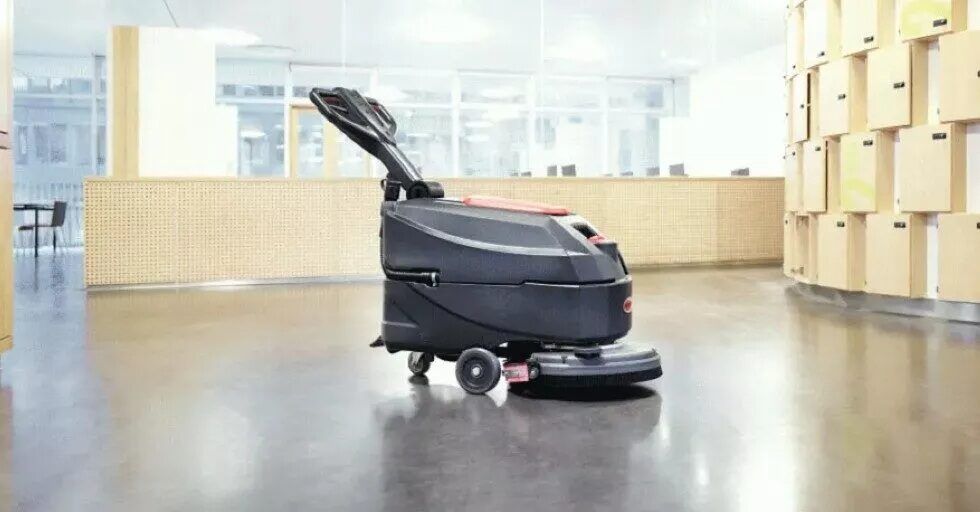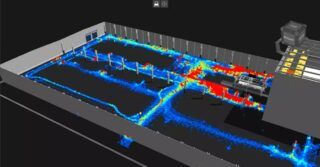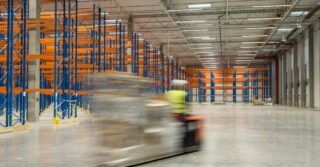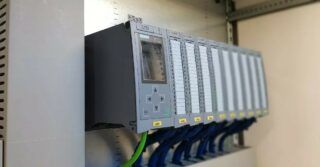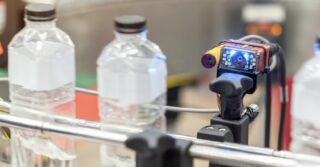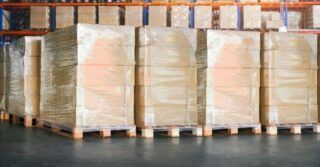A cleaning machine is a device that not only serves as basic equipment for maintaining floor cleanliness but is also equipped with advanced capabilities, such as washing, scrubbing, sweeping, and drying surfaces.
In practice, this means that professional cleaning machines are effective alternatives to traditional methods, such as mopping, which has traditionally been the primary way of maintaining cleanliness in workplaces. In this article, we will suggest what the best cleaning machine might be, optimizing the floor cleaning process for various industrial sectors and beyond.
Application of cleaning machines
The application of cleaning machines mainly comes from public institutions and owners of large workplaces. In practice, one can often see employees in grocery stores efficiently maneuvering floor-cleaning machines between shelves of goods.
Where to use cleaning machines?
- Stores and shopping malls: Maintaining cleanliness in these places is crucial to encourage customers to make purchases.
- Warehouses: Large warehouse spaces require effective cleaning solutions to maintain hygiene and order.
- Hospitals: In the medical environment, cleanliness is crucial for the safety of patients and staff.
- Schools: In educational institutions where a large number of people are present daily, cleaning machines are invaluable in maintaining cleanliness.
- Sports facilities (gyms): In places where physical activity is frequent, maintaining cleanliness on the floor is essential.
- Hotels: The hospitality industry emphasizes aesthetics and cleanliness, making cleaning machines indispensable.
- Companies with large office spaces: In offices of considerable size, efficient cleaning becomes a key element.
- Military units: In military institutions, where maintaining order is a part of discipline.
- City and Municipal Offices as well as public offices: Public places require special attention regarding cleanliness.
Professional cleaning machines serve as effective tools in these diverse environments, helping to maintain cleanliness and creating hygienic working conditions.
When is it worth buying a floor and floor cleaning machine?
The purchase of cleaning machines becomes economically justified primarily for medium and larger surfaces. The range from 50 to 100 m2 seems to be a reasonable limit where the effectiveness and time savings resulting from the use of cleaning machines begin to outweigh traditional cleaning methods.
Generally speaking, investing in cleaning machines for such surfaces is cost-effective from the perspective of efficiency, as well as time and energy savings for workers involved in cleanliness maintenance. Furthermore, taking care to choose the right equipment tailored to the specific type of surface helps in preserving the durability and aesthetics of floors or carpets.
Where to buy floor cleaning machines?
The purchase of cleaning machines can be made in various ways, and the choice of the right place depends on the buyer’s preferences, needs, and expectations. Here are a few places where you can buy various types of cleaning machines:
- Online stores: Online commercial platforms such as Multi-Matic.pl offer a wide range of cleaning machines from different brands and models, including scrubbers and polishers, sweepers, scrubber-dryers, autonomous cleaning machines, professional steam cleaners, industrial vacuum cleaners, and office vacuum cleaners. The store features cleaning machines from brands like Nilfisk, Viper, and Tecnovap. You can find professional equipment and industrial cleaning chemicals.
- Catalogs and brochures: Catalogs from companies specializing in the sale of cleaning equipment may contain detailed information about available cleaning machines. They may be available in both print and online versions.
- Local businesses: Local stores, dealers, or companies specializing in the sale of cleaning machines may offer personalized service, advice on choosing the right equipment, and after-sales service. It’s worth consulting with local experts to match the cleaning machine to specific needs.
- Trade fairs: Visiting trade fairs related to cleanliness maintenance can be an excellent opportunity to explore different models of cleaning machines, compare their features, and obtain information from manufacturer representatives.
It’s important to thoroughly understand your needs and expectations before purchasing a cleaning machine. Regardless of where and how you make the purchase, it is recommended to conduct a comprehensive market analysis, compare models, and consult with cleanliness maintenance experts to make an informed and efficient choice. Avoid unnecessary expenses on overly complex models and opt for a device that best suits your specific needs and working environment.
Size and Efficiency of Floor Cleaning Machines
Types of cleaning machines in terms of size and efficiency can be divided into:
- Micro scrubbers: These are the smallest floor cleaning devices, typically used in small facilities. They are efficient for maintaining cleanliness on small surfaces. Purchasing a cable-operated cleaning machine is worthwhile for areas like corridors, small shops, or offices.
- Small floor machines and scrubbers: Single-disc cleaning machines have an efficiency of around 500 m2. Professional scrubbers and floor machines are ideal for medium-sized areas, such as small and medium-sized shops, restaurants, or workshops.
- Medium-sized cleaning automats: Designed for cleaning areas up to 1500 m2. They work well in places where regular, medium-sized cleaning is needed, such as larger offices, production halls, or warehouses.
- Large scrubber-dryers: Machines dedicated to areas up to 3200 m2. Scrubber-dryers are ideal for larger commercial facilities such as supermarkets, industrial halls, or logistics centers, where efficiency and speed are crucial.
- Self-propelled cleaning machines with an operator: Created for areas exceeding 3000 m2. These advanced machines are self-propelled and usually require an operator. Self-propelled machines are used for efficiently cleaning large surfaces, such as shopping malls, exhibition halls, or airports.
Precisely matching the machine to the size and nature of the surface it will work on is crucial for efficiency and time savings. Therefore, before making a purchase, it is advisable to consult with experts and thoroughly understand the specifics of the area to be cleaned.
Cleaning Machines – Power Supply and Purpose of Machines
The choice between network-powered and battery-powered cleaning machines depends on specific needs and working conditions. Here are some additional considerations for both types of machines:
Cable-Powered Cleaning Machines
Portable and lightweight cleaning devices, making them easy to transport and handle in places where frequent relocation is necessary.
Cable-powered cleaning machines are ideal for unobstructed areas where power outlets are easily accessible.
Cables may pose a potential hazard, especially in high-traffic areas.
Cable-powered cleaning machines are also suitable for places with multiple floors and no elevators, as these machines are much smaller and more mobile than battery-powered devices.
Examples: Viper AS 430 C, Viper 510 C.
Battery-Powered Cleaning Machines
Battery-powered cleaning machines are very convenient as they do not require a constant connection to a power source.
Ideal for areas with limited access to outlets where dragging a cable might be cumbersome.
High mobility, no cables eliminate the risk of tripping and provide greater freedom of movement for the operator.
Disadvantages:
- Greater weight due to the presence of batteries, which may affect ease of transport.
- Shorter operating time than cable-powered machines, requiring breaks for battery recharging.
It’s worth noting that advancements in battery technology may improve the operating time of battery-powered machines. When choosing between these two types of machines, it’s essential to consider specific working conditions, mobility requirements, and the availability of a power source to select the solution that best meets the needs of the application.
Cleaning Machines and a Drive
The drive of a cleaning machine plays a crucial role in the efficiency and effectiveness of the cleaning process. Depending on the type of drive, cleaning machines can be divided into several categories:
Non-driven Cleaning Machines
Designed for flat surfaces with small areas.
Ideal for places where intensive movement across large spaces is not necessary.
Example: Floor cleaning machines used in car showrooms, small shops, or workshops.
Traction-Driven Cleaning Machines
Equipped with an additional motor to assist the operator in moving the machine.
Intended for medium and large surfaces where frequent cleaning throughout the day is necessary.
Facilitates the operator’s work, especially on uneven surfaces or when overcoming inclines.
Example: Scrubber-dryers with battery drive.
Self-Propelled Cleaning Machines
The largest cleaning machines, operated by the operator like a driver.
Self-propelled cleaning machines are designed for the largest areas, such as airports, train stations, or large industrial facilities.
Characterized by high speed, allowing for the rapid coverage of extensive areas.
Example: Large scrubber-dryers used in industrial or commercial areas.
The precise choice of a machine depends on specific needs, the type of surfaces to be cleaned, and the frequency of cleaning. When making a purchase, it’s also important to consider economic aspects, such as maintenance costs, energy consumption, and the availability of after-sales service.


